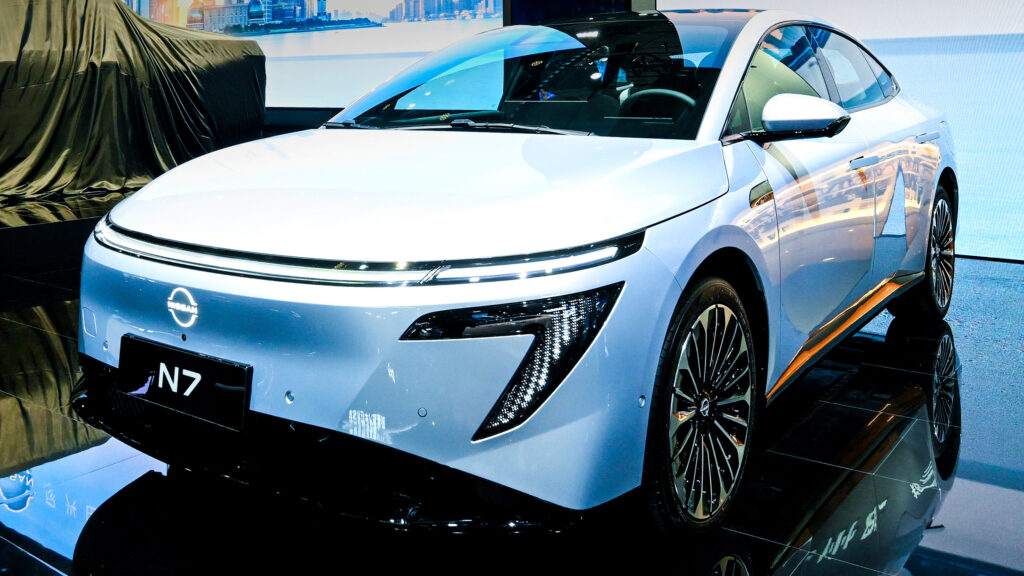A drag coefficient of 0.208 makes the N7 one of the world’s most aerodynamic production cars, but that’s where the excitement ends
April 23, 2025 at 13:00

- The Dongfeng Nissan N7 sedan appeared at Shanghai five months after its initial limited reveal.
- Smooth but bland body design gives a Cd factor of 0.208, just behind also-dull-looking Mercedes EQS.
- Buyers can choose from 58 and 73 kWh batteries, and power outputs range from 215 to 268 hp.
Nissan’s new Frontier Pro hybrid pickup was the highlight of the brand’s Shanghai Auto Show stand, but it wasn’t the only electrified Nissan vehicle on display. The Nissan N7 was there too, helping us to fill in the large blanks left when the first handful of pictures dropped a few months back.
More: Toyota’s New Electric Flagship Sedan Takes A Shot At Tesla Model S
Unlike the boxy, tough-looking Frontier, whose square jaw is modeled after Nissan’s 1980s D21 truck, the N7, developed with the brand’s Chinese joint venture with Dongfeng, focuses on being as aerodynamically efficient as possible to maximize electric range.
Aerodynamic Efficiency Meets Bland Design
A Cd factor of 0.208 makes it one of the most aerodynamic production cars today, beaten only by the Mercedes EQS (0.202). Unfortunately, as with the EQS, that pursuit of the slippery shape seems to have resulted in an incredibly bland design.
That much we knew from the initial soft launch last fall, but back then Nissan decided not to reveal any interior images, though we knew it was going to be a 50:50 toss-up between a large tablet touchscreen and a full-width, pillar-to-pillar screen-fest. It always is these days. Sure enough, the cabin pics released today show a large, 15.6-inch, 2.5k tablet touchscreen mounted to the right of another tablet display serving as a gauge cluster.
The cabin looks smart and calming, but that calmness might not last for owners because physical buttons are notably absent on any surface other than the two spokes of the steering wheel. Maybe the seats will help drop the blood pressure back down. Nissan says the front ‘zero pressure’ seats have an AI-based posture adjustment system that draws on data provided by 49 sensors, and have 12-point massage functionality. A fridge hidden under the armrest can cool drinks to -6 C (21°F) or heat them to 55 C (131°F).
The Powertrain: Nothing to Write Home About
And finally, we get to the powertrain spec, which, to be honest, like the exterior design, is not very interesting by EV standards. There’s no 800-volt charging tech, just old-school 400-V electrics for the 58 and 73 kWh batteries, and power options range from 215 hp (218 PS / 160 kW) to 268 hp (272 PS / 200 kW).
Nissan claims the bigger power pack can take you 395 miles (635 km) on a charge, but that’s according to China’s CLTC protocol – EPA numbers are always much lower. Not that the N7, which is built in China, for China, will be getting a US launch anytime soon.
#Nissan #Slippery #Electric #Sedan #EQS #Exciting


